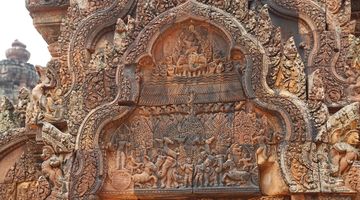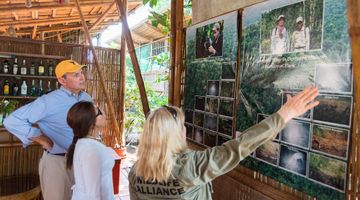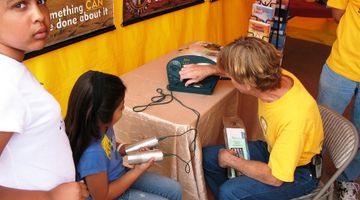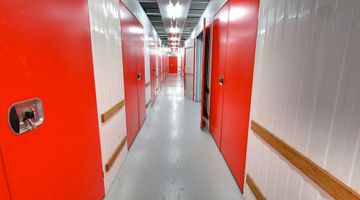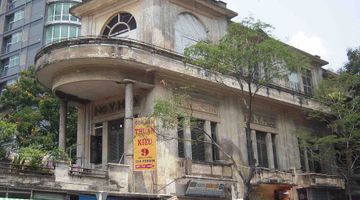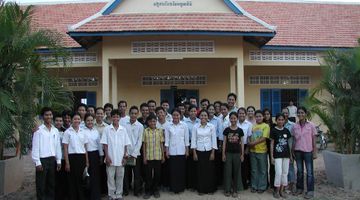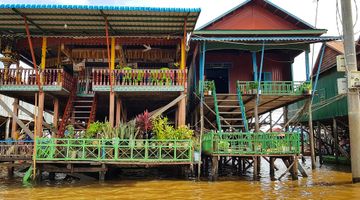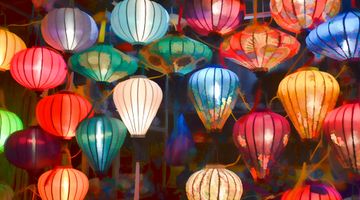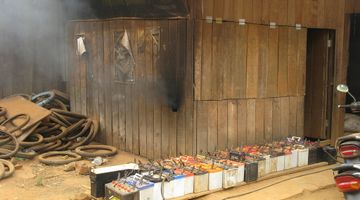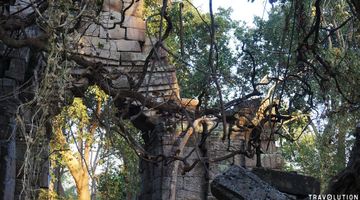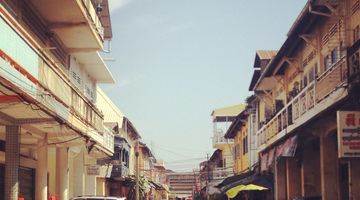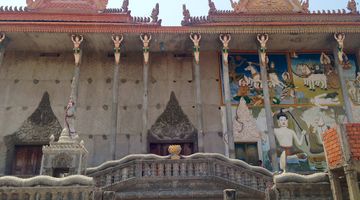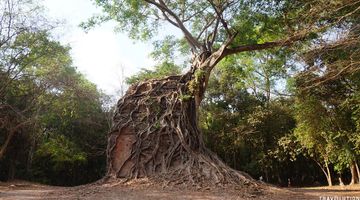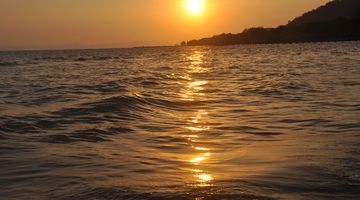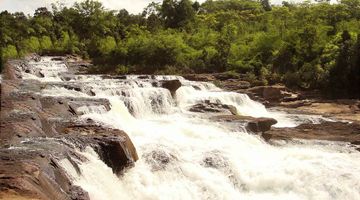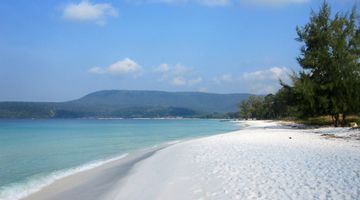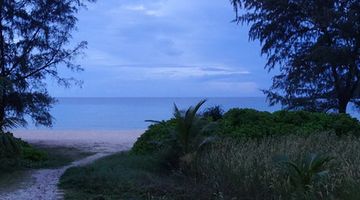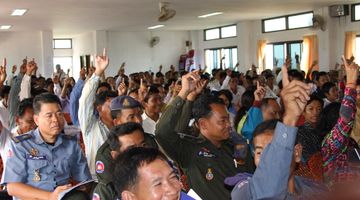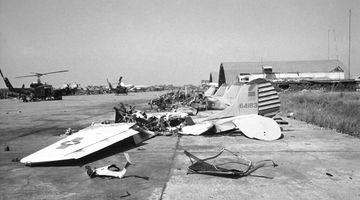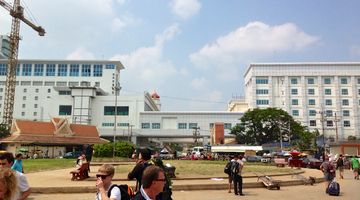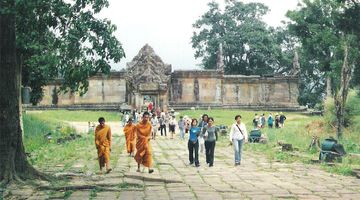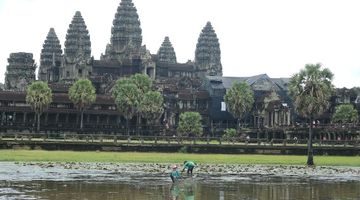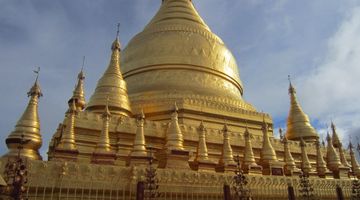Cambodia Travel Guide - Best Travelling Tips
The first thing, which comes to your mind on hearing ‘Cambodia’, is arguably ‘Angkor’. And yes, the remnants of the powerful Khmer Kingdom of the times long passed are as impressive as they can get.
Chances that Angkor will be the main reason – or the first/only reason – for which you would ever think about visiting Cambodia are not just high; they are 100% sure. If you have just a couple of days at your disposal and wish to make the first acquaintance, then you will most probably base in Siem Reap with several temples of the Angkor Small Circle and a floating village at Tonle Sap Lake as the only things you will have time to check – and that is already good enough.
Why should you visit Cambodia?
Angkor is one of the most impressive of all the ancient cities
It may have not been included into the recent list of the new Seven Wonders of the World, but Angkor is definitely not less impressive than the Great Wall of China, Petra, Taj Mahal or Chichen Itza. If you do not believe us, head there straight away and see it with your own eyes!
There is much more to the ancient temples of the Khmer Empire than just Angkor Wat, Angkor Thom and Baphuon. Do venture further afield to get the most of them. Seeing the day off at one of the isolated far flung temples will enhance your life experience with new emotions. And yet, even if the most popular route around Angkor is all you can do, you won’t be disappointed either. Angkor is a wonder, whatever the New7Wonders Foundation say.
Travelling around Cambodia by land has improved dramatically
During the last 5–7 years Cambodia saw the country’s major thoroughfares getting a modern facelift. The highways connecting the most popular destinations in the country like route 6 between Poipet and Phnom Penh do have new pavement now but in parts remain nothing more than a two-lane freeway used by all possible means of transport – from buffalo carts and motorbikes to express buses and large trucks.
Very often, overtaking drivers are not interested at all if there is oncoming traffic or not. Driving at night-time is more dangerous and if you can try to avoid taking night buses.
Though the conditions of some roads still leave much to be desired and there is a long way to go before the local standards come anywhere close to those, say, of Thailand, you can already travel between the major tourist destinations in Cambodia by bus rather comfortably.
There are international bus links with Thailand from Phnom Penh to Bangkok or from Siem Reap to Bangkok, Vietnam from Phnom Penh to Ho Chi Minh City or Laos from Siem Reap to Pakse. These bus routes facilitate travel around the region a lot and let budget-conscious travellers move between the neighbouring countries with easy and comfort.
A good network of interprovincial buses also contributes to the growth of tourism within the country as do domestic flights linking the major tourist destinations – now it is easy to move around the country as never before.
Cambodia offers very diverse experiences
Ancient ruins? Yes, there are plenty. Pristine beaches? More than enough – and often more spectacular than you would have expected. Jungle trekking? Oh, put on your trekking shoes immediately! How-is-it-made type of experience? See the best world pepper being cultivated or salt harvested in the glittering salt fields. Ah, you are a foodie, aren’t you? Then you will be delighted to find out that the Khmer food is full of flavour but without the scorching chilli of the neighbours. Coffee lovers will find their caffeine fix, too.
Do you need more reasons to book your tickets to Cambodia immediately?
Check our Weather in Cambodia and Visa to Cambodia pages to get prepared to your trip.
Note Though one of the poorest nations, Cambodia remains in greater part a safe place to visit. Violent crimes do happen but are generally uncommon. Do not put on pink glasses, though. Bribery, dirt-cheap alcohol and poor driving skills are inevitable companions of your travel in Cambodia.
Do not be surprised to hear the request to pay for ‘a quick lane’ from the immigration officers on entering the country. Take it for granted that the same bus tickets can cost you USD5 or USD10 or even more – all depending on the tout’s appetite. Expect children in Angkor and in some other most touristy areas begging for money ‘to pay for school’ – directly or through selling one-dollar rubbish – they do not actually have to pay for school, and today their school is not closed, no.
Remember that punishments for drug use are harsh in Cambodia. There are definitely better and safer places on earth to smoke a joint. With high quality alcohol from around the world available at the stores at alarmingly low prices, it is easy to overdose – be prudent! Deaths of travellers from overdosing are not a rare case in the country. Driving drunk or stoned is not a good idea, either.
Read our Safe Travel in Cambodia to find out more about scams and dangers you are risking to come across there. Use your common sense and enjoy your trip!
Where to go in Cambodia
As mentioned above, Angkor is a good enough reason to go to Cambodia...
...enough for falling in love with this country of simple and sincere people, amazing historical heritage and mouth-watering cuisine.
Our love affair with Cambodia turned out to be time-tested and enduring and we do encourage you to plan at least a two-week journey to Cambodia which will include more ancient ruins, secret paradise island hideaways, charming towns oozing that old-fashioned colonial flare and close-to-nature experience in the Cardamom mountains and country’s national parks.
You have not seen Cambodia without visiting...
Angkor Archaeological Park
A UNESCO-listed World Heritage Site, Angkor used to be the capital city of Khmer Empire. The vast complex comprises a collection of important archaeological sites and is an amazingly atmospheric and enigmatic place to explore.
The gateway to the wonders of Angkor, Siem Reap is the most convenient base for exploring the historical park with all the facilities and services geared towards traveller’s needs.
Tonle Sap Lake
A unique body of water with astonishing biodiversity and the largest lake in South East Asia, Tonle Sap Lake is also heart and soul of the nation. Join an organised tour to visit famous floating villages or take a boat from Battambang to Siem Reap which offers a more authentic experience.
Phnom Penh
The capital of Cambodia with rather a tumultuous past, Phnom Penh is changing rapidly. Modern shopping malls and high-rises are mushrooming in the city where exquisite Buddhist temples and leafy boulevards still remember the darkest pages of its history.
Sihanoukville
White sand beaches of Sihanoukville attract travellers of all styles. Young and adventurous find wild parties and old-school backpacker vibe there, rich and respectable go for all comforts in luxurious resorts.
Where to go if you like...
Ancient ruins
With no public transport available, getting to Koh Ker, the 10th century capital of Khmer Empire, is a challenge. Ruins lost in the jungle are indeed very rewarding, and expect to have the whole place for yourself.
A sure bet for those who appreciate quiet charm of small towns and yet wish to see some of the most spectacular ruins in Cambodia, Kampong Thom is a dream destination. Tour the area around Kompong Thom to have glimpses of everyday life in rural Cambodia.
Commanding views from the top of the hill by the border between the two countries, for a long time the spectacular Preah Vihear has remained a bone of contention for Thailand and Cambodia. It is really spectacular and nowadays can be visited only from Cambodia.
Beaches and islands
When you think of pristine tropical islands with white sand beaches kissed by crystal clear seas and the interior covered with lush jungle, Cambodia may not come to your mind as number one destination – and it is a good reason to consider checking Koh Rong before it is too late!
Just by Koh Rong’s side sits a smaller island of Koh Rong Sanloem is an ultimate island paradise. We mean ultimate.
A tranquil alternative to Sihanoukville, Kepboasts great seafood and unspoiled by mass tourism atmosphere. Off shore islands are a sure draw, and the border crossing with Vietnam is easily reached, too.
Trekking and nature
Putting their toes in eight provinces of Cambodia, the Cardamom and Elephant Mountains stretch from the border with Thailand through Central Cambodia and almost up to the border with Vietnam. Trekking or boat tours are best organised from Koh Kong.
A small town in Ratanakiri province, Banlung has that rare feeling of getting away of it all. Home to minority groups, rubber and oil palm trees plantations, as well as beautiful waterfalls and protected areas, it is worth the effort of getting there.
If you are fond of dolphins, Kratie is not to be missed. It is one of few places in the world to meet gentle and endangered Irrawaddy dolphins.
Rustic charm of off-the-beaten-path destinations
Battambang, the second largest city in Cambodia, mainly remains a destination out of the beaten track. The city boasts some nice colonial architecture, and several worth seeing ancient temples dot the area around it. The only of its kind bamboo train may soon stop existence as plans to restore the railway system in Cambodia are on the way.
Take the relaxed atmosphere of a riverside town, add a breezy chill of the former French hill top station of Bokor, throw in the lively yet not wild restaurant and bar scene and spice it all with the best pepper ever. That is what Kampot has on offer.
